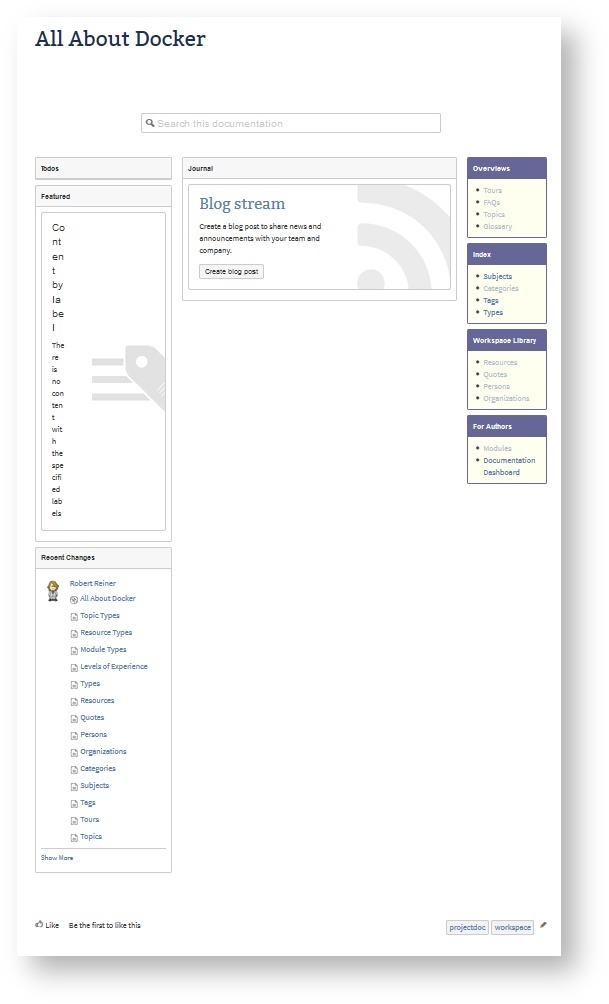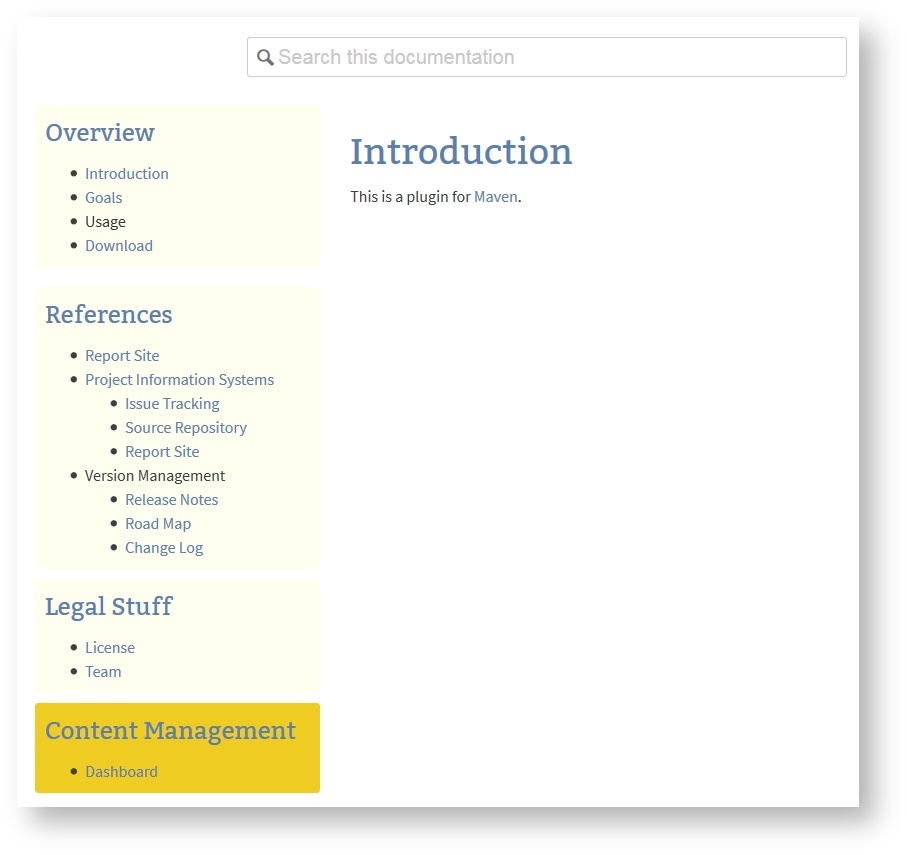...
Due to the fact that we work together on different topics, such spaces are created and removed quite often. These spaces have the same basic structure. There may be differences for different kinds of work - collect information about a topic, brainstorm on new products, run a spike on a technical problem, and maybe moreso on. Each has type of work may have its own space blueprint to get the team started quickly without much further ado.
...
Resources, the glossary, references to experts are provided at the same location. Once the space is created the team is ready to add information. The important part is that the team starts working on the topic right away. They have a basic structure - they are familiar with - to add information collaboratively.
Maven Documentation Space
Here is an another example that walks you through a space blueprint to create user documentation for Maven plugins.
...
First start the Maven Space Wizard and add the name and key to the space and the G:A:V coordinates to your released artifact (we assume that the add-on is already property properly installed, i.e. has information on how to access the Nexus repository).
...
Let's start with the homepage of the new space!:
The space provides links to generates pages that provide information inform users about goals and how to download the plugin.
Maven Goals Page
A space blueprint may create more than just on page. The goals page is generated from information found in the artifact's plugin descriptor.
...
This plugin references three mojos that present their supported parameters by navigating to the mojo page.
Download Page
A space blueprint may create more than just on page. The space blueprint for Maven plugins also creates a page with information on how to download the plugin.
...
- Employ templates to support
- writers (concentrate on content not structure or layout)
- readers (familiarity with structure and layout for types of documents)
- Use Sections and other projectdoc macros to render only meaningful parts of your page
- Create spaces frequently
- Use blueprints that do not generate too much elements you have to remove after creation
- Use workspace workspaces to collaborate on a topic
- Use wizards to create project spaces based on project metadata (like POMs or plugin descriptors)
...






